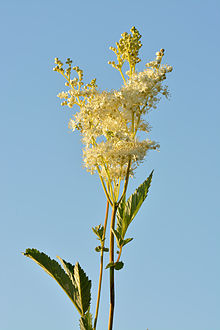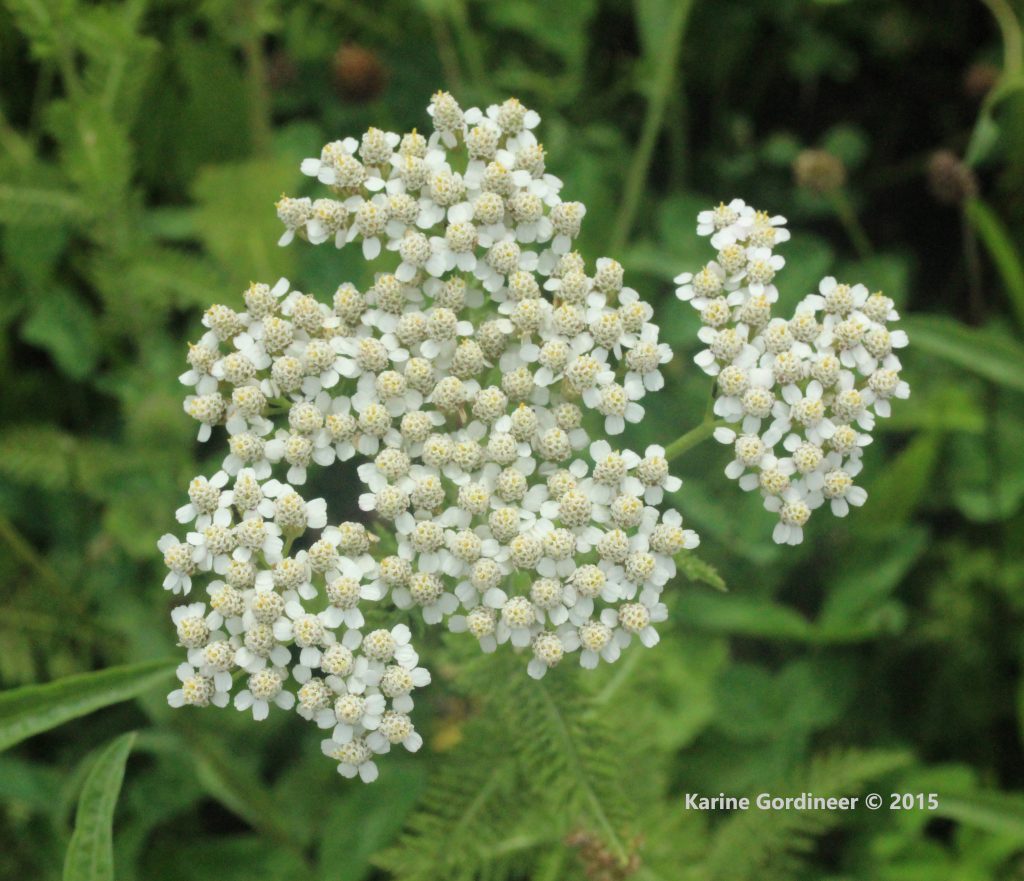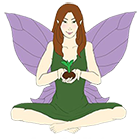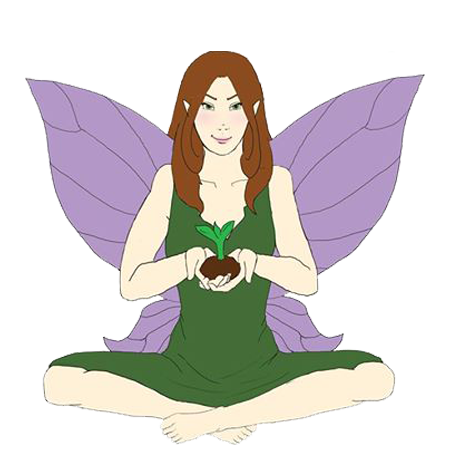June 20, 2016
In
Herbs
By
greengirlherbs
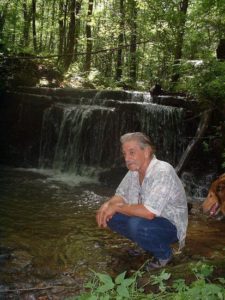 I owe a lot to my parents. They both were a very integral part of the person I grew and continue to grow into, each in their own ways. Even though neither one of them are alive today, their presence is with me always. I often think of the gifts they gave me, the lessons they taught.
I owe a lot to my parents. They both were a very integral part of the person I grew and continue to grow into, each in their own ways. Even though neither one of them are alive today, their presence is with me always. I often think of the gifts they gave me, the lessons they taught.
As usual this Father’s Day has me thinking about my dad, who he was as a person, and who he was as a father. It’s easy for people to think they know someone and that that person has been important in their life but when that person is your parent it’s a very different relationship. A parent is often with us since birth until they walk on. Up to that point, that’s your entire life. It’s a unique relationship in that as we change and grow, so do our perceptions and how we see everything including our parents. Of course a child’s perspective can be skewed and yet in many ways children know those individuals called “parents” better than anyone. Sometimes a child’s unflinching honesty can be painful to hear but like I said, children in many ways know the real deal with no sugar coating. They see the good. They see the bad and every thing in-between. And likewise, few beings can push a parent’s buttons more than a child except perhaps a spouse and I certainly was no exception in the “button pushing” arena.
When my father passed, and even since his passing, many people contacted me in one way or another. Each of them had a different story of my dad and who he was for them. Yet none of them really saw the whole person. Honestly at times it annoyed me and sometimes still does. People see a tiny sliver of a person or they spend a few months or years with someone and think they know everything about that person. Most often they’re just seeing who that person was at that moment. That particular moment or time in their life. And more than likely, they see who that person wanted them to see. I believe when you can look at the totality of who a person is without embellishing or romanticizing, then you can say you truly know and love them.
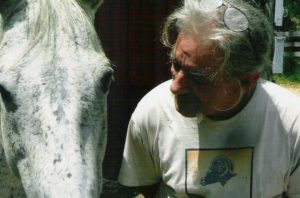 I’d like to think I had a pretty good view of my dad and who he was at different points in his life. Although I wasn’t incarnate prior to the 26 years of his life before I was born, in a very real way I knew him then too. In a person’s DNA is truly everything about them well beyond eye and hair color. Their likes and dislikes, their hopes and dreams, and every experience they’ve ever had, all coded into serpent-like genetic blueprints. So for the record, I think I know him better than anyone.
I’d like to think I had a pretty good view of my dad and who he was at different points in his life. Although I wasn’t incarnate prior to the 26 years of his life before I was born, in a very real way I knew him then too. In a person’s DNA is truly everything about them well beyond eye and hair color. Their likes and dislikes, their hopes and dreams, and every experience they’ve ever had, all coded into serpent-like genetic blueprints. So for the record, I think I know him better than anyone.
No one needs to say how important the father-daughter relationship is. Fathers play a crucial part of a women’s self esteem, how she sees herself, if she knows that her presence, that she matters in this universe, and how she puts herself out in the world. My dad certainly wasn’t an easy man by any stretch of the imagination. Much of the way he lived flew in the face of convention. A trait that his many admirers so loved about him but as a daughter it frequently had its challenges. I’ve often said that I earned the right to be my father’s daughter. Such was the incongruity of my dad’s parenting that I knew how to read a race sheet at 5, I’d not only been exposed to the Tao but it was a part of my regular reading, and I could play a pretty decent game of chess much to my father’s chagrin. Such were the contradictions that was Haviland, my dad. Still, some of the conventional attributes of family life that gives a child a certain stability and a sense of security were oftentimes absent.
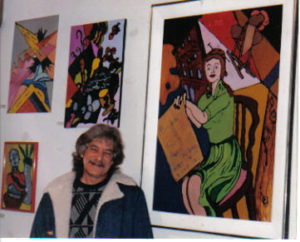
Nonetheless, my father always had an acute sense of what was crucial and on that he never missed the mark. Even so far as being able to instill in me things he never got growing up. An unshaking self-reliance, a great fondness of books and learning, an insatiable creativity, an ability to see through the bullshit of life and sometimes people, and an undying love, appreciation, and awe for the Earth and all her beings, are just a few of those gifts that I treasure. Suffice it to say there were times his attention wasn’t as centered on home as I certainly would have liked, and yet I still managed to squirrel away a lifetime full of memories. My dad and I often hiked together. Those are truly some of my fondest memories. I’ve yet to meet anyone as skilled as he was in that area. My dad knew of the plants, the medicinal ones and the edible ones, the trees, and of how the animals moved. He knew how to move silently in the woods without being detected or leaving any trace of his presence. In the woods a stillness would often come over him and a sense that he was finally at peace with himself. Something that I would find early on within myself as well. Many times he would convey a teaching with few or no words. Not many people, if any, have the skill to do that. He had an uncanny ability with plants and we often had incredible gardens. He transferred his love of them easily to me and that passion guides my life today. He was a very hard worker although I believe his creative mind was not designed for the grind of modern life. Later in his earth walk he took up the brush again and his paintings were incredible. Mainly scenes of nature, expressive passionate works, and a few of me that I treasure.
My father was many things in his life. A father, a husband, a son, a brother, an uncle, a painter, a landscaper, a leader, a trickster. He had an incredible faith in my abilities and instilled in me the belief that I could do anything. Bringing home an A on a report card I often heard “Why wasn’t it an A plus?”. I understood my father’s meaning in that he thought I was just the brightest being ever although it at times aggravated me. Now it makes me smile and although I often push myself too much, through his urging I’ve had the courage to pursue what’s in my heart and to not settle for what doesn’t make me happy and isn’t who I am.
Stepping on my spiritual path so early in my young adulthood afforded me the opportunity of much reflection on my life and everything within it. Without such introspection I don’t know if I would see with the clarity that I do today. I understand my father now more than I ever did and yet, as long as I live I’ll continue to learn about him and through that, about myself. One of my most poignant memories of my dad is him teaching me to swim on a lake we went to, often. After showing me how, he would put keep his arms under me to hold me up in the water, and then he would say “Now swim.” After a while, I would always “But daddy your arms aren’t there anymore” and he’d say “I’ve got you, I’ve got you. See you’re doing it, you’re swimming.” Even though he’s no longer on the physical plane, I still often hear him saying “I’ve got you, I’ve got you, don’t worry you’re doing it on your own…”
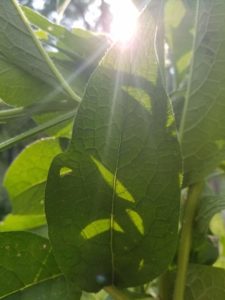
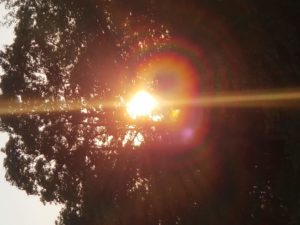
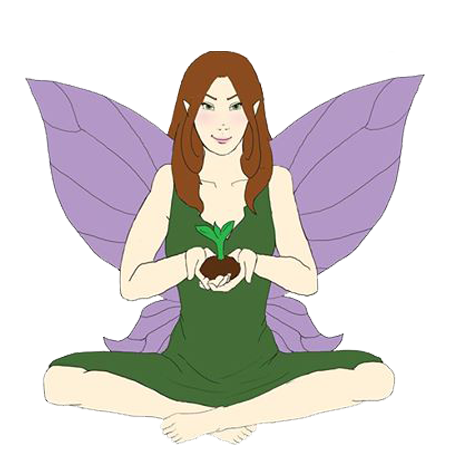
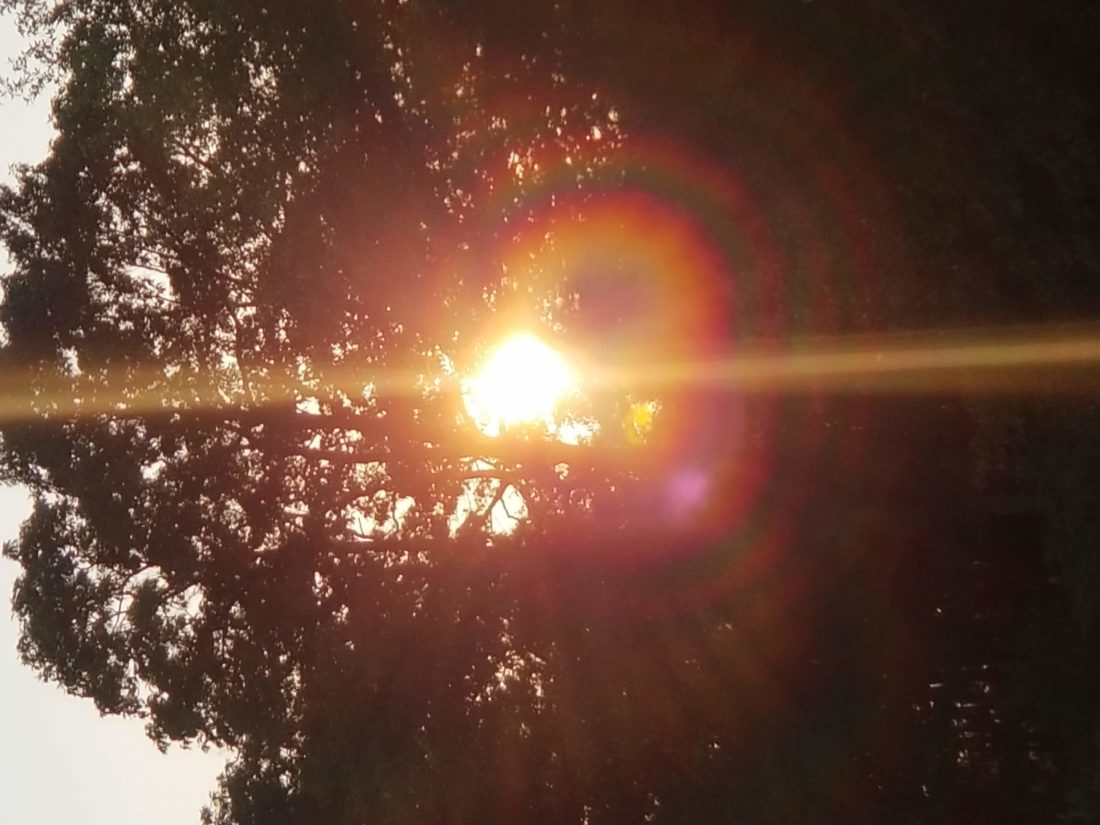
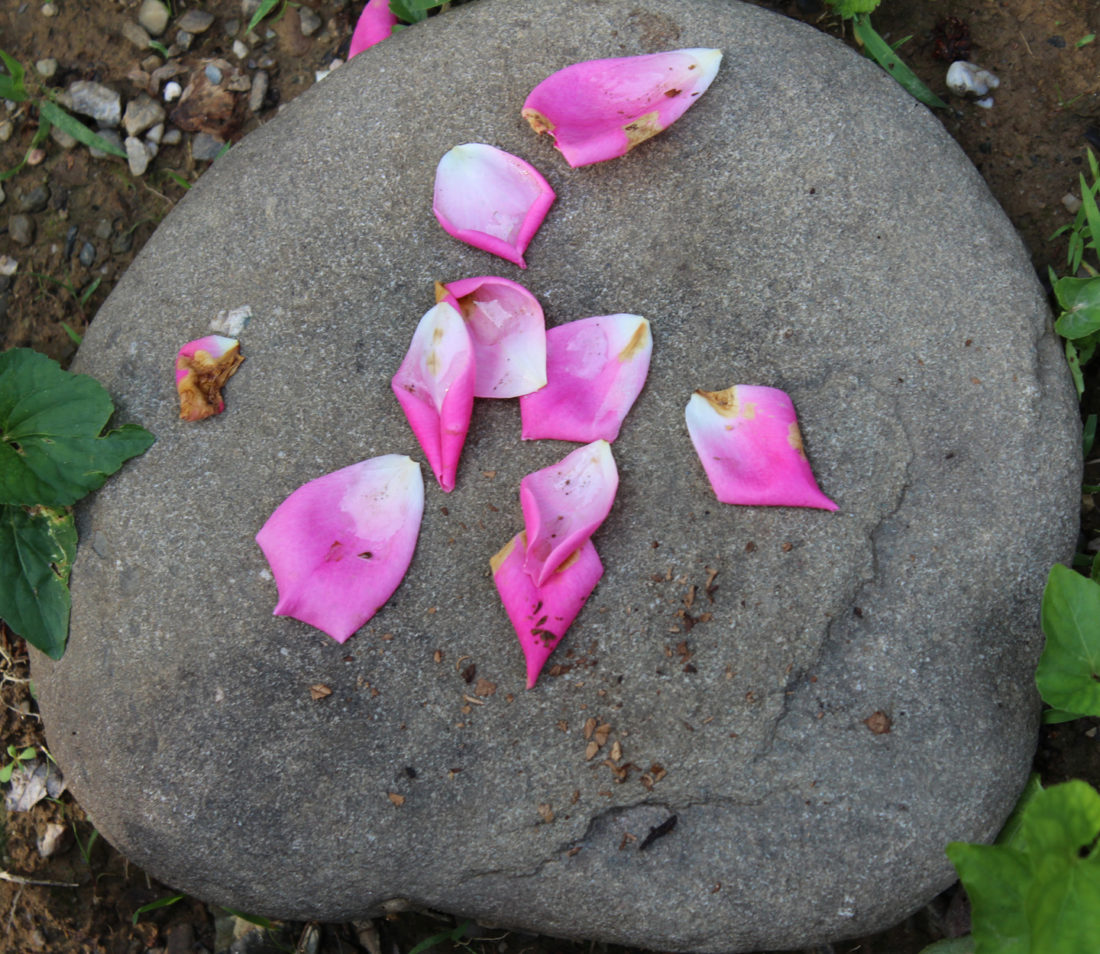
 I have a Medicine Wheel Garden that is about 35 feet in diameter. It’s quite a lot of space that I haven’t quite filled yet and perhaps I never will. It’s a work in progress that I believe most gardeners can relate to. “What’s a Medicine Wheel Garden?”, you ask? A Medicine Wheel Garden is a garden arranged within a circle with, at a minimum, stones marking off the four directions, north, east, south, west, plus the direction of center, or “within”, marked off at the center of the circle. Stones are also designated for Grandmother Moon, Grandfather Sun, Mother Earth, and Father Sky. Depending upon how detailed, the Medicine Wheel may include stones around its circumference, each one representing a different quality.
I have a Medicine Wheel Garden that is about 35 feet in diameter. It’s quite a lot of space that I haven’t quite filled yet and perhaps I never will. It’s a work in progress that I believe most gardeners can relate to. “What’s a Medicine Wheel Garden?”, you ask? A Medicine Wheel Garden is a garden arranged within a circle with, at a minimum, stones marking off the four directions, north, east, south, west, plus the direction of center, or “within”, marked off at the center of the circle. Stones are also designated for Grandmother Moon, Grandfather Sun, Mother Earth, and Father Sky. Depending upon how detailed, the Medicine Wheel may include stones around its circumference, each one representing a different quality.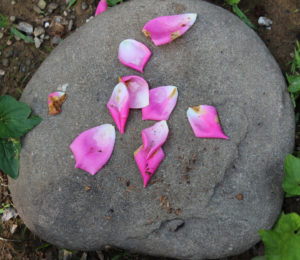 because there are so many layers to the Medicine Wheel. It requires a lifetime of learning and openness. Whenever we enter into sacred space in a conscious way, be that for ritual or gardening, everything that happens becomes synchronistic, and if we’re paying attention we can find the lessons. Such as it is for me in the garden. When I teach Medicine Wheel we talk about design and I hand out templates for students to work on their garden design but I always mention to leave room for the unexpected. We may plan the garden in a particular way, full of specific plants that we’d like to thrive in our garden, we give them exactly what they need to grow, the right sun, soil, fertilizer, water, and yet they may still fail to thrive. Why? They just do not want to be in that spot. Oftentimes there is no logical reason.
because there are so many layers to the Medicine Wheel. It requires a lifetime of learning and openness. Whenever we enter into sacred space in a conscious way, be that for ritual or gardening, everything that happens becomes synchronistic, and if we’re paying attention we can find the lessons. Such as it is for me in the garden. When I teach Medicine Wheel we talk about design and I hand out templates for students to work on their garden design but I always mention to leave room for the unexpected. We may plan the garden in a particular way, full of specific plants that we’d like to thrive in our garden, we give them exactly what they need to grow, the right sun, soil, fertilizer, water, and yet they may still fail to thrive. Why? They just do not want to be in that spot. Oftentimes there is no logical reason.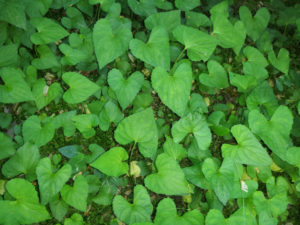 Likewise, I like to see what “shows up”. I keep room for the unexpected. I never plan so much into the garden that there’s no room for my wild visitors. If I did that I would miss out on a lot. The first year I planted this garden I noticed there were an abundance of Violets (Viola cucullata). Many home owners and gardeners consider these plants a nuisance and will rip them out but their flowers are truly lovely, and tasty and their medicinal benefits are quite impressive (read blog post on Violet
Likewise, I like to see what “shows up”. I keep room for the unexpected. I never plan so much into the garden that there’s no room for my wild visitors. If I did that I would miss out on a lot. The first year I planted this garden I noticed there were an abundance of Violets (Viola cucullata). Many home owners and gardeners consider these plants a nuisance and will rip them out but their flowers are truly lovely, and tasty and their medicinal benefits are quite impressive (read blog post on Violet 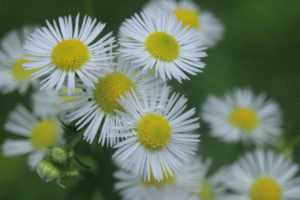
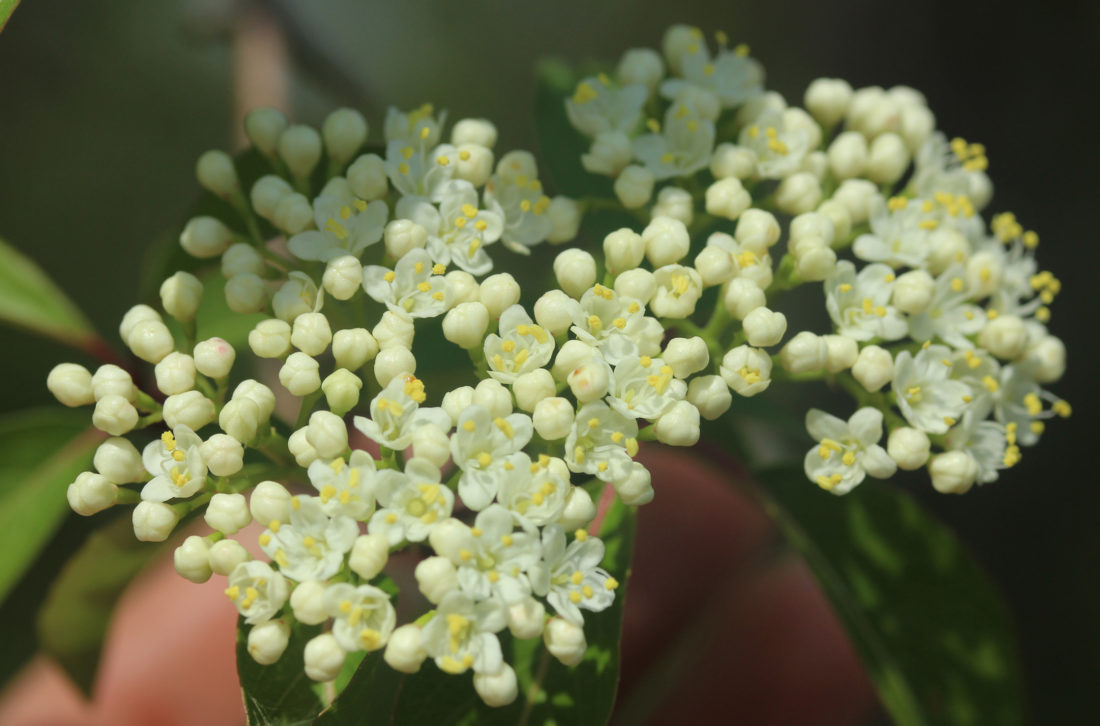
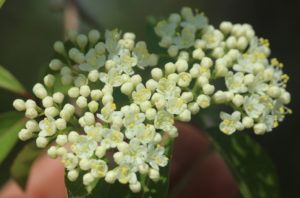 Every August I watch in anticipation for the deep purple berries of the Elder Tree. It’s technically not a tree at all but a tall growing shrub reaching heights of up to 12 feet. My obsession begins early in the summer at the end of June when the effusive flush of the fragrant inflorescence form into panicles of creamy white. Remarkably beautiful are the flowers that I can’t bear to harvest them plus I love the berries too much! These white blossoms have a special magic and medicine all their own, often being made into flavorful concoctions such as Elder Wine or Elder Flower Cordials, or into foods such as Elder Flower Fritters. Their medicinal uses are impressive as well for they are considered diaphoretic and carminative in nature and useful as teas to help resolve colds and flus quickly often reducing their duration by several days. Recent studies also suggest that Elder flowers have anticancer benefits and may help to support eye health.
Every August I watch in anticipation for the deep purple berries of the Elder Tree. It’s technically not a tree at all but a tall growing shrub reaching heights of up to 12 feet. My obsession begins early in the summer at the end of June when the effusive flush of the fragrant inflorescence form into panicles of creamy white. Remarkably beautiful are the flowers that I can’t bear to harvest them plus I love the berries too much! These white blossoms have a special magic and medicine all their own, often being made into flavorful concoctions such as Elder Wine or Elder Flower Cordials, or into foods such as Elder Flower Fritters. Their medicinal uses are impressive as well for they are considered diaphoretic and carminative in nature and useful as teas to help resolve colds and flus quickly often reducing their duration by several days. Recent studies also suggest that Elder flowers have anticancer benefits and may help to support eye health.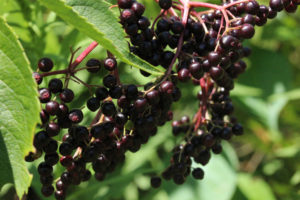 leave enough for my wild friends. Infinitely delicious are the berries, that they have been used in cooking pies and jams for centuries not to mention Elderberry Wine and jelly! Elderberries have impressive antiviral properties that are equal to or greater than modern vaccines without the side effects. Elderberry Syrup can be taken throughout flu and cold season as a highly effective preventative remedy and it’s delicious too! I take the Elderberry Syrup all season as it keeps me from getting ill and I feel great from all the antioxidants contained within. High in anthocyanins, Elderberries are a wonderful tonic for the heart and for supporting healthy eyes as do many of the darker berries such as Bilberry which were used in WWII by British fighter pilots to improve their night vision. Likewise, Elderberries may provide support for those with type 2 diabetes.
leave enough for my wild friends. Infinitely delicious are the berries, that they have been used in cooking pies and jams for centuries not to mention Elderberry Wine and jelly! Elderberries have impressive antiviral properties that are equal to or greater than modern vaccines without the side effects. Elderberry Syrup can be taken throughout flu and cold season as a highly effective preventative remedy and it’s delicious too! I take the Elderberry Syrup all season as it keeps me from getting ill and I feel great from all the antioxidants contained within. High in anthocyanins, Elderberries are a wonderful tonic for the heart and for supporting healthy eyes as do many of the darker berries such as Bilberry which were used in WWII by British fighter pilots to improve their night vision. Likewise, Elderberries may provide support for those with type 2 diabetes.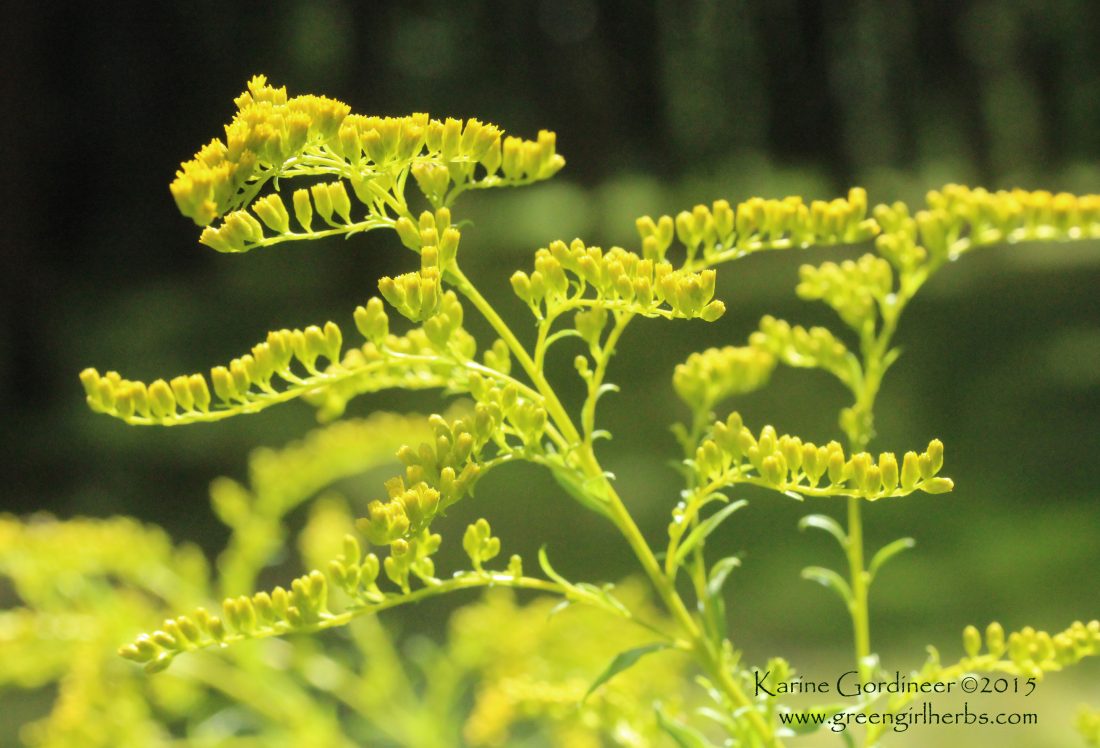
 Many Native American tribes utilized the Goldenrod plant for a variety of ills including the Iroquois who employed infusions of the roots and flowers for pain. The Potawatomi made a tea from the blossoms to bring down fevers. Other tribes used the plant topically to treat snakebite, and the root for burns. Indeed, Goldenrod is rich with medicinal healing powers and with its astringent qualities can be used to quell fall allergic reactions as well as cold and flu upper respiratory mucus and fevers. Goldenrod can be taken to help tune our immune systems for winter and as nature is so wise, she has arranged that Goldenrod is available for us just in time. Goldenrod is a friend to the urinary system and healing to the kidneys, coming to the aid of those suffering with urinary gravel or stones, and frequent urination. A tea can also be taken to prevent gravel, kidney stones, nephritis, and issues of the prostate. Goldenrod is an effective digestive and possesses anti-inflammatory qualities. As a cleansing herb, it is helpful in the treatment of arthritis. Goldenrod can be used as a tea or tincture and the seeds are an edible trailfood. All Goldenrods are safe to use and many can be used interchangeably.
Many Native American tribes utilized the Goldenrod plant for a variety of ills including the Iroquois who employed infusions of the roots and flowers for pain. The Potawatomi made a tea from the blossoms to bring down fevers. Other tribes used the plant topically to treat snakebite, and the root for burns. Indeed, Goldenrod is rich with medicinal healing powers and with its astringent qualities can be used to quell fall allergic reactions as well as cold and flu upper respiratory mucus and fevers. Goldenrod can be taken to help tune our immune systems for winter and as nature is so wise, she has arranged that Goldenrod is available for us just in time. Goldenrod is a friend to the urinary system and healing to the kidneys, coming to the aid of those suffering with urinary gravel or stones, and frequent urination. A tea can also be taken to prevent gravel, kidney stones, nephritis, and issues of the prostate. Goldenrod is an effective digestive and possesses anti-inflammatory qualities. As a cleansing herb, it is helpful in the treatment of arthritis. Goldenrod can be used as a tea or tincture and the seeds are an edible trailfood. All Goldenrods are safe to use and many can be used interchangeably.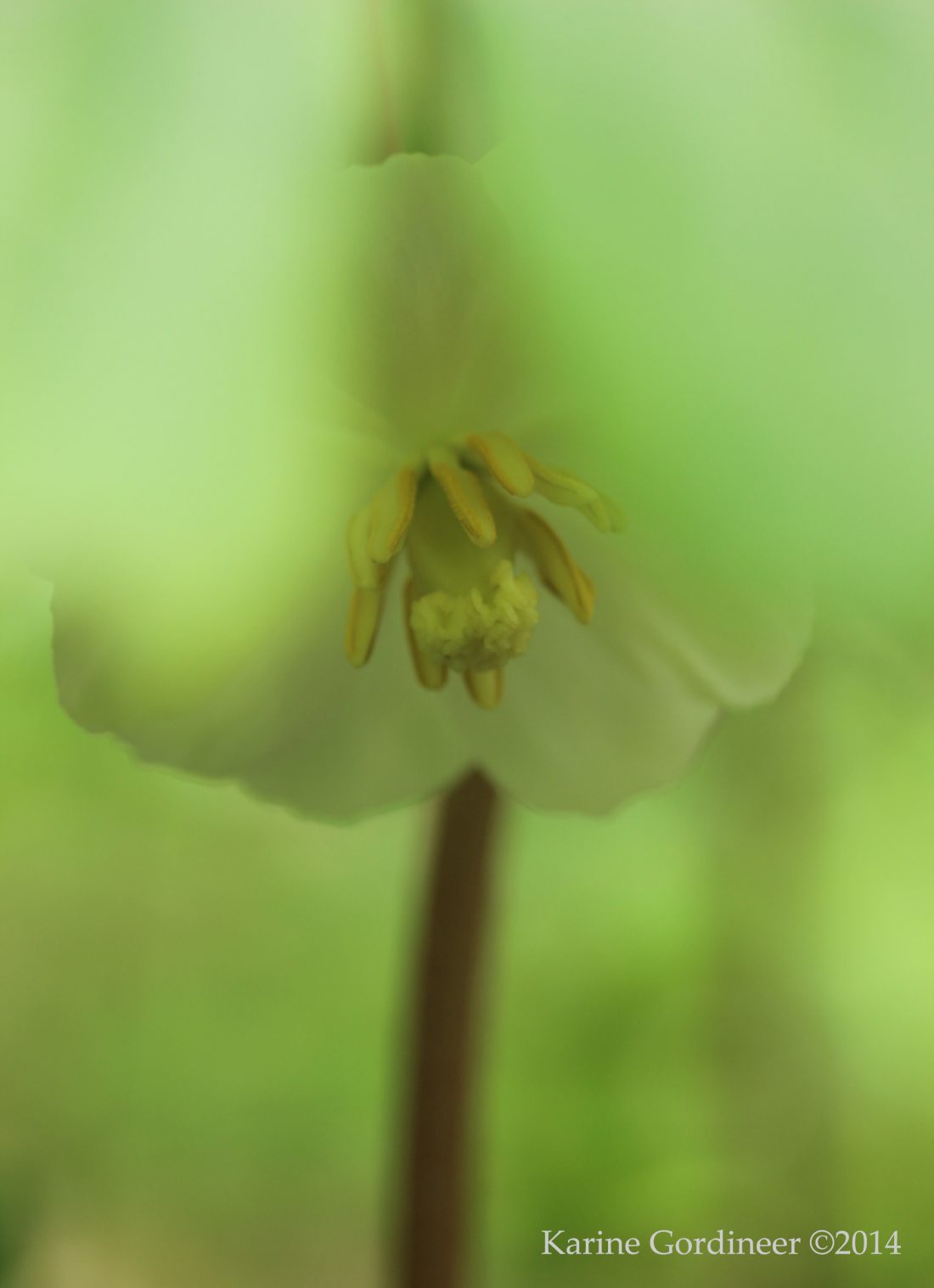
 As we spend more time in nature and most especially consciously in nature, we can tune into these plant energies and know things that science is just beginning to catch up with. This type of knowledge is a “knowing” that surpasses the mind and penetrates into the Heart and Spirit. When I was a child I spent much time in the woods and fields of my childhood home and the backyard of my grandmother’s house both of which were home to a few most beloved Maple Trees. I climbed those trees from the time I was a small child right up to my teenage years. In the spring and summer lazy afternoons were spent reading, daydreaming, and simply be-ing in the trees. Autumn, raking leaves into enormous piles to jump in. I always loved the different point of view of being up high and examining the tree bark and leaves up close. Trees were never inert things but were my friends and companions. I had a sense that the trees held me and not coincidentally they had broken several careless falls that could have been disasters. In those quiet moments with the trees I had a sense or a knowing of their presence. Within that presence, that energy, there was a communication. The trees spoke to me. I felt no need to share these conversations, but accepted them and they became part of the secret knowledge I carried inside of myself. I knew that once you were introduced to one tree that all the trees would know you. Most especially the trees of that particular species. Today, science speaks of the underground network of mycorrhizal fungi that helps the trees to communicate with one another even so much as warning of predators and sharing needed resources. I think soon they will discover that this network extends much further than previously thought and many other things they currently believe is not possible.
As we spend more time in nature and most especially consciously in nature, we can tune into these plant energies and know things that science is just beginning to catch up with. This type of knowledge is a “knowing” that surpasses the mind and penetrates into the Heart and Spirit. When I was a child I spent much time in the woods and fields of my childhood home and the backyard of my grandmother’s house both of which were home to a few most beloved Maple Trees. I climbed those trees from the time I was a small child right up to my teenage years. In the spring and summer lazy afternoons were spent reading, daydreaming, and simply be-ing in the trees. Autumn, raking leaves into enormous piles to jump in. I always loved the different point of view of being up high and examining the tree bark and leaves up close. Trees were never inert things but were my friends and companions. I had a sense that the trees held me and not coincidentally they had broken several careless falls that could have been disasters. In those quiet moments with the trees I had a sense or a knowing of their presence. Within that presence, that energy, there was a communication. The trees spoke to me. I felt no need to share these conversations, but accepted them and they became part of the secret knowledge I carried inside of myself. I knew that once you were introduced to one tree that all the trees would know you. Most especially the trees of that particular species. Today, science speaks of the underground network of mycorrhizal fungi that helps the trees to communicate with one another even so much as warning of predators and sharing needed resources. I think soon they will discover that this network extends much further than previously thought and many other things they currently believe is not possible.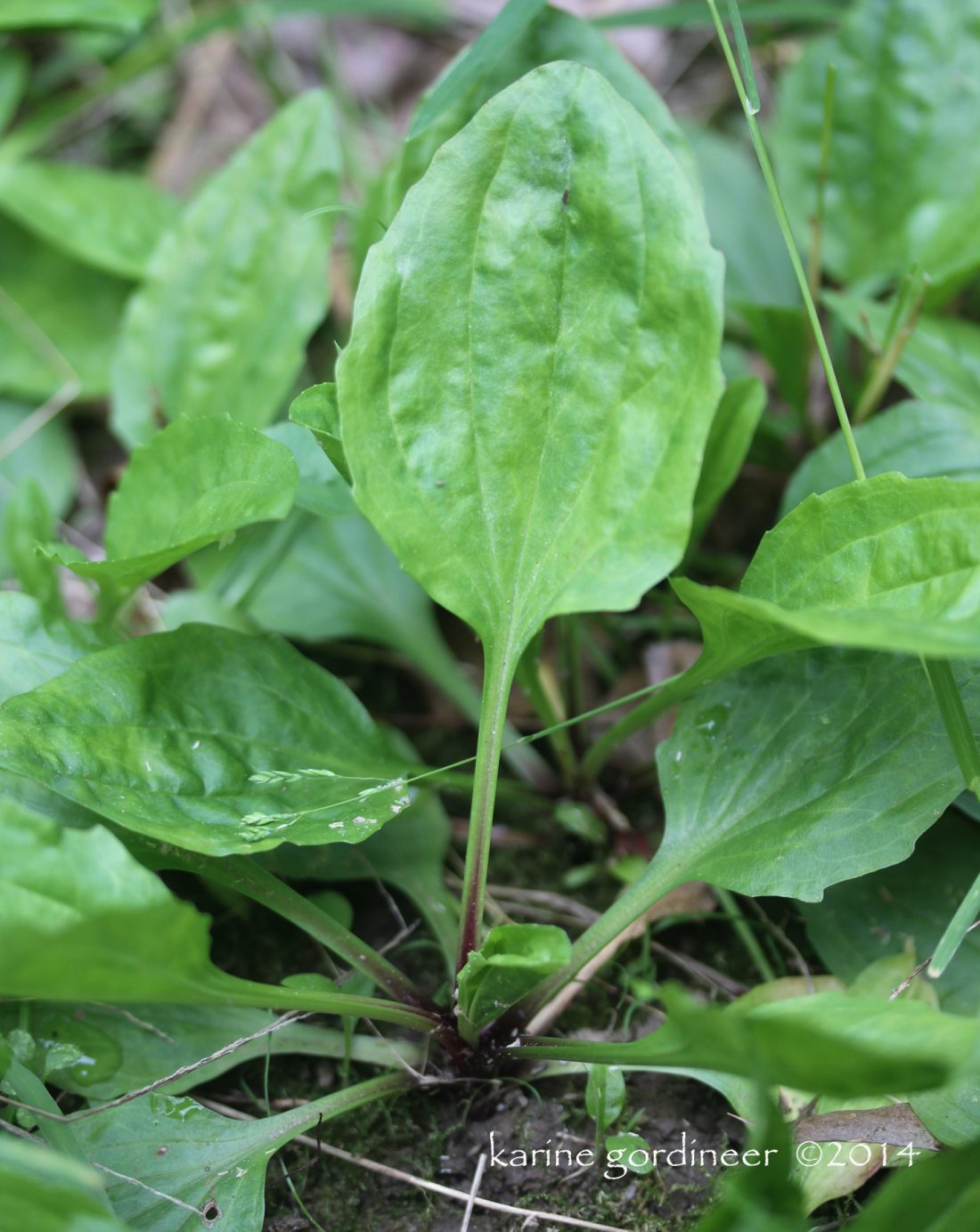
 If people knew that the cures for many of their ills were growing right in their own backyards, I’d like to think they would put down the glyphosate, the lawn mower, the “weed wacker”, and let it grow!
If people knew that the cures for many of their ills were growing right in their own backyards, I’d like to think they would put down the glyphosate, the lawn mower, the “weed wacker”, and let it grow! tain shines as a highly valued medicinal. Historically it has been used as a folk cancer remedy and is still used today in Latin America for this purpose. Its demulcent properties are soothing to the entire intestinal tract and are used to heal ulcers, indigestion, and IBS. The common constipation remedy psyllium comes from another species of Plantain, Plantago psyllium. Plantain is soothing, in fact, to all mucous membranes including throats, and lungs making it effective during colds and sore throats.
tain shines as a highly valued medicinal. Historically it has been used as a folk cancer remedy and is still used today in Latin America for this purpose. Its demulcent properties are soothing to the entire intestinal tract and are used to heal ulcers, indigestion, and IBS. The common constipation remedy psyllium comes from another species of Plantain, Plantago psyllium. Plantain is soothing, in fact, to all mucous membranes including throats, and lungs making it effective during colds and sore throats.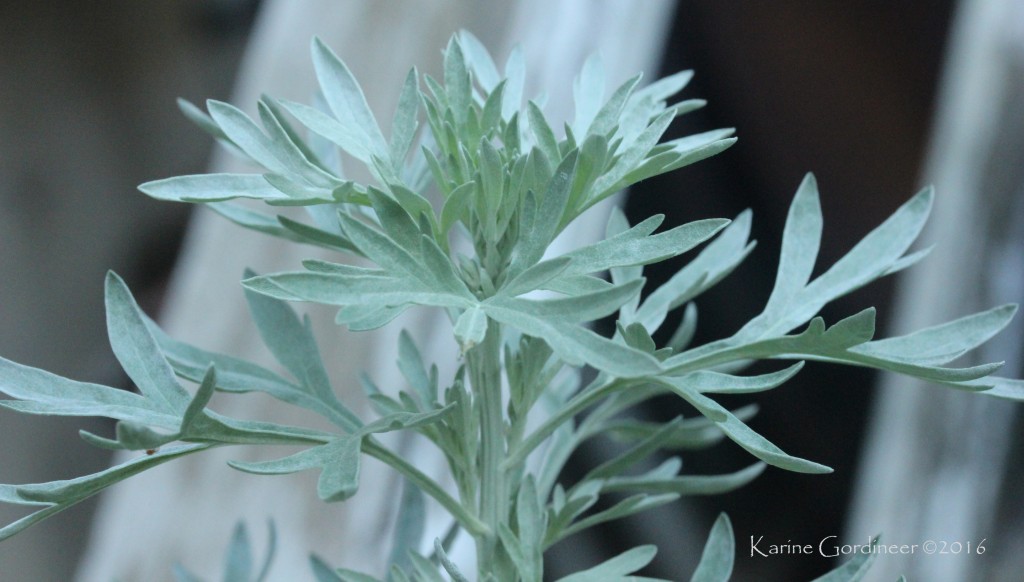
 Artemisia absinthium. Yes, that Artemisia. The “green fairy”, the once outlawed absinthe said to have driven scores of Parisians insane, rumored to cause tuberculosis, epilepsy, and even blamed for Van Gogh’s insanity. Not to ruin a good scandal but Wormwood’s bad boy reputation is completely overblown. The thujone in Wormwood that gives it its hallucinogenic properties, is also a neurotoxin in high doses, causing seizures and eventually death. The thujone is most high in the concentrated Wormwood oil. Thujone levels in Wormwood oil are around 40% and even small amounts of the oil can cause irreversible damage. Thujone levels in Absinthe were a mere .003% not likely to cause a problem. What is more than likely to blame for their debaucherously driven behavior would be Absinthe’s 70-80% alcohol content as Wormwood is only one of a number of herbs concocted in the famous potion. Although Absinthe originated in Switzerland in the late 18th century, it grew in popularity initially with French soldiers in the 1840’s who had been given the drink to cure malaria for which Wormwood is a traditional remedy. Making its way to America, Absinthe found a permanent home in New Orleans where it is still a featured spirit today at such notable establishments as The Old Absinthe House. Prior to that time, Wormwood had been used medicinally as far back as Egyptian times and is named in the Ebers Papyrus, an ancient medical text that is over 3,500 years old. At around the same time, China was also using Wormwood infused medicinal wines. Wormwood is said to have been a favored herb of Artemis who gifted it to Chiron, “Healer of the Gods”, whereby Wormwood became one of his most important healing herbs.
Artemisia absinthium. Yes, that Artemisia. The “green fairy”, the once outlawed absinthe said to have driven scores of Parisians insane, rumored to cause tuberculosis, epilepsy, and even blamed for Van Gogh’s insanity. Not to ruin a good scandal but Wormwood’s bad boy reputation is completely overblown. The thujone in Wormwood that gives it its hallucinogenic properties, is also a neurotoxin in high doses, causing seizures and eventually death. The thujone is most high in the concentrated Wormwood oil. Thujone levels in Wormwood oil are around 40% and even small amounts of the oil can cause irreversible damage. Thujone levels in Absinthe were a mere .003% not likely to cause a problem. What is more than likely to blame for their debaucherously driven behavior would be Absinthe’s 70-80% alcohol content as Wormwood is only one of a number of herbs concocted in the famous potion. Although Absinthe originated in Switzerland in the late 18th century, it grew in popularity initially with French soldiers in the 1840’s who had been given the drink to cure malaria for which Wormwood is a traditional remedy. Making its way to America, Absinthe found a permanent home in New Orleans where it is still a featured spirit today at such notable establishments as The Old Absinthe House. Prior to that time, Wormwood had been used medicinally as far back as Egyptian times and is named in the Ebers Papyrus, an ancient medical text that is over 3,500 years old. At around the same time, China was also using Wormwood infused medicinal wines. Wormwood is said to have been a favored herb of Artemis who gifted it to Chiron, “Healer of the Gods”, whereby Wormwood became one of his most important healing herbs.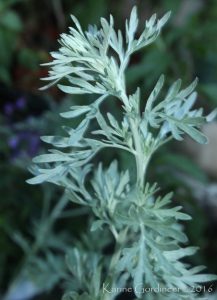 Back to my obsession. I fall in love with plants for a variety of reasons. Sometimes simply because they exist. I could lose hours in Wormwood’s foliage so irresistible is her silver, feathery leaf. The form so similar to other Artemisia’s, certainly one of my favorite plant genus. For all her power as a medicinal, and an enchantment, Wormwood’s leaf formation divulges a certain softness. Perhaps this she bestows along with her protection on those who appreciate and love her. Her history as a protective herb is a long and varied one but her capacity as a healer is most impressive. One of the most bitter of plants, Wormwood has been utilized as a digestive bitter and a tonic for all ailments of the stomach and digestion. Her effect on the liver is notable as she is said to cure jaundice, hepatitis, and mythologically as an antidote for Hemlock poisoning. Like her sister, Mugwort, she is a diaphoretic and will help to bring down a nasty fever. As another of Artemis’s herbs, she has a history as a women’s herb and considered an emmenagogue. She is a competent pain reliever and will bring much needed rest. Most impressive are her abilities as an anti-parasitic. So much so that she is often found to be more effective than modern antimalarial drugs. Such as it is with plants. They can go where pharmaceuticals can’t. Such is their magic. I don’t find magic and medicine to be in opposition to one another. In fact, I don’t believe you can have true healing without magic and wonder and Wormwood brings that in abundance.
Back to my obsession. I fall in love with plants for a variety of reasons. Sometimes simply because they exist. I could lose hours in Wormwood’s foliage so irresistible is her silver, feathery leaf. The form so similar to other Artemisia’s, certainly one of my favorite plant genus. For all her power as a medicinal, and an enchantment, Wormwood’s leaf formation divulges a certain softness. Perhaps this she bestows along with her protection on those who appreciate and love her. Her history as a protective herb is a long and varied one but her capacity as a healer is most impressive. One of the most bitter of plants, Wormwood has been utilized as a digestive bitter and a tonic for all ailments of the stomach and digestion. Her effect on the liver is notable as she is said to cure jaundice, hepatitis, and mythologically as an antidote for Hemlock poisoning. Like her sister, Mugwort, she is a diaphoretic and will help to bring down a nasty fever. As another of Artemis’s herbs, she has a history as a women’s herb and considered an emmenagogue. She is a competent pain reliever and will bring much needed rest. Most impressive are her abilities as an anti-parasitic. So much so that she is often found to be more effective than modern antimalarial drugs. Such as it is with plants. They can go where pharmaceuticals can’t. Such is their magic. I don’t find magic and medicine to be in opposition to one another. In fact, I don’t believe you can have true healing without magic and wonder and Wormwood brings that in abundance. I owe a lot to my parents. They both were a very integral part of the person I grew and continue to grow into, each in their own ways. Even though neither one of them are alive today, their presence is with me always. I often think of the gifts they gave me, the lessons they taught.
I owe a lot to my parents. They both were a very integral part of the person I grew and continue to grow into, each in their own ways. Even though neither one of them are alive today, their presence is with me always. I often think of the gifts they gave me, the lessons they taught. I’d like to think I had a pretty good view of my dad and who he was at different points in his life. Although I wasn’t incarnate prior to the 26 years of his life before I was born, in a very real way I knew him then too. In a person’s DNA is truly everything about them well beyond eye and hair color. Their likes and dislikes, their hopes and dreams, and every experience they’ve ever had, all coded into serpent-like genetic blueprints. So for the record, I think I know him better than anyone.
I’d like to think I had a pretty good view of my dad and who he was at different points in his life. Although I wasn’t incarnate prior to the 26 years of his life before I was born, in a very real way I knew him then too. In a person’s DNA is truly everything about them well beyond eye and hair color. Their likes and dislikes, their hopes and dreams, and every experience they’ve ever had, all coded into serpent-like genetic blueprints. So for the record, I think I know him better than anyone.
